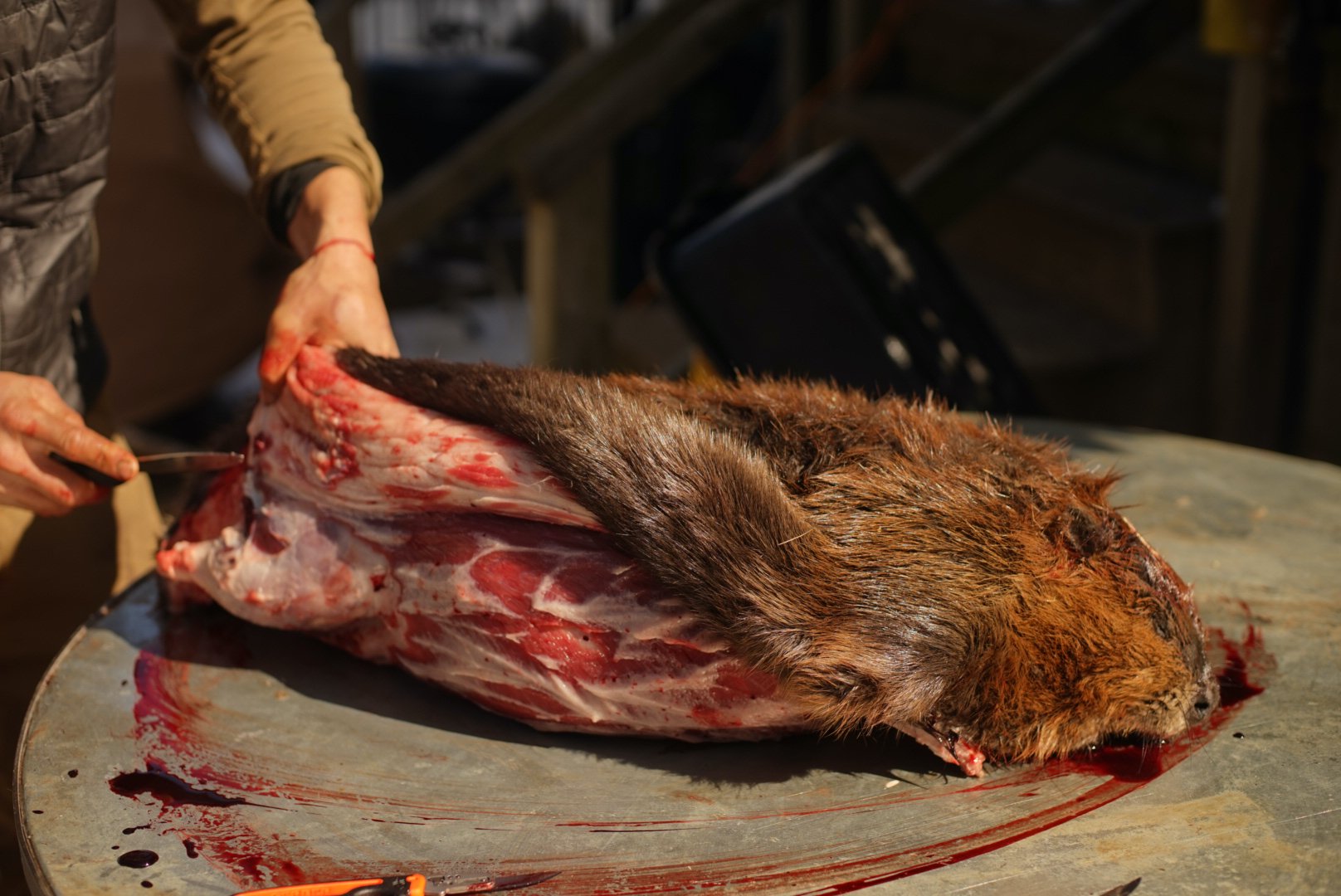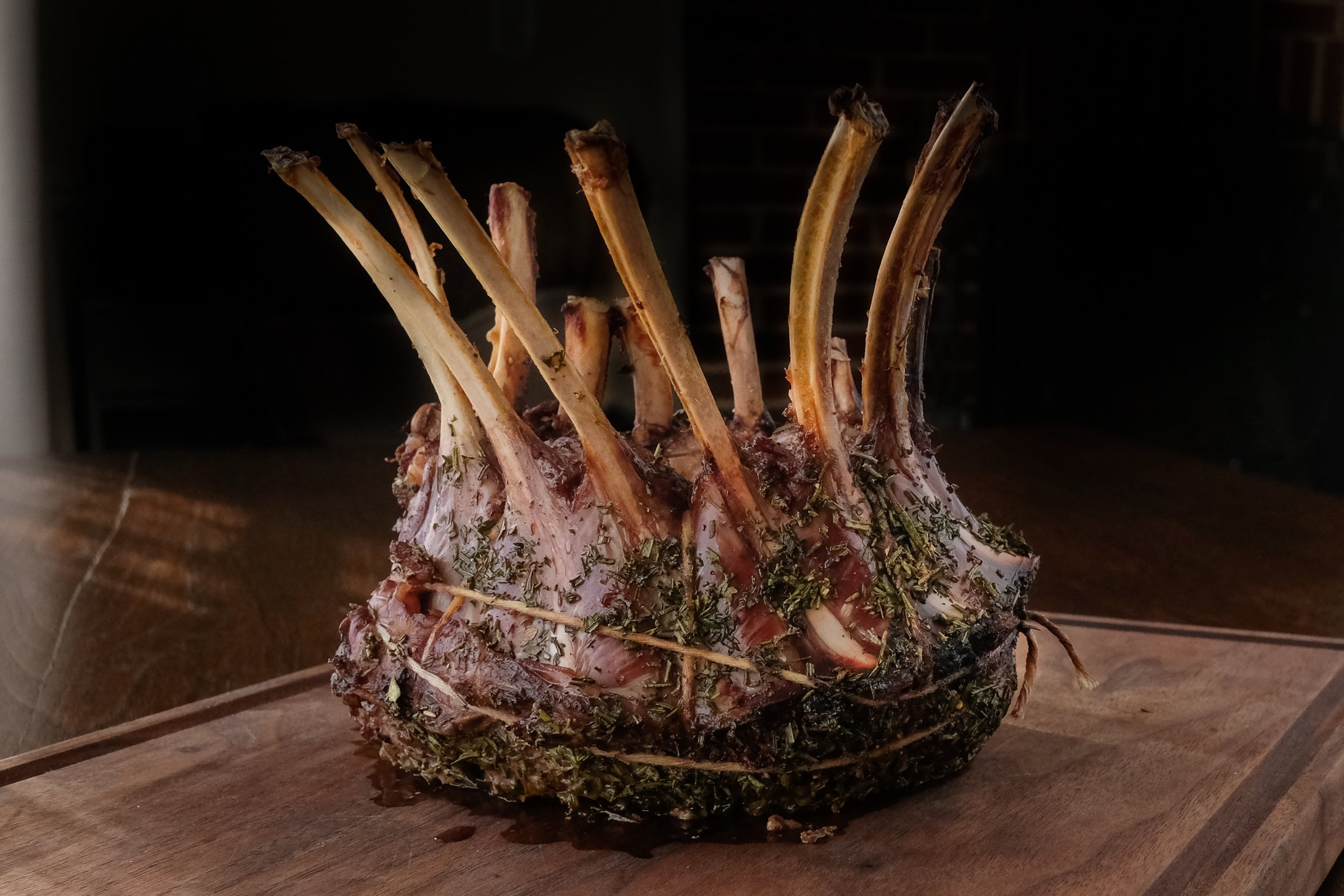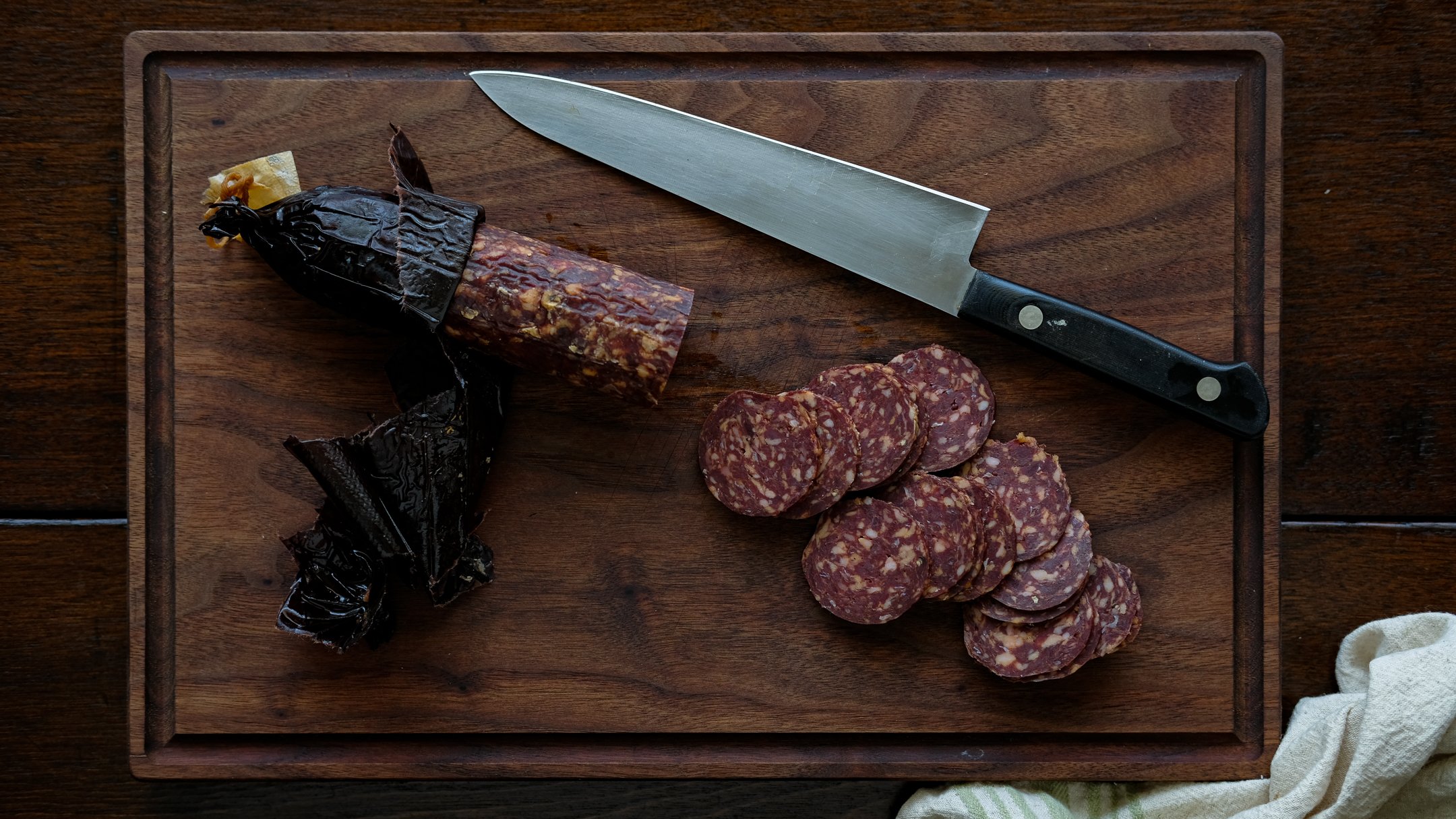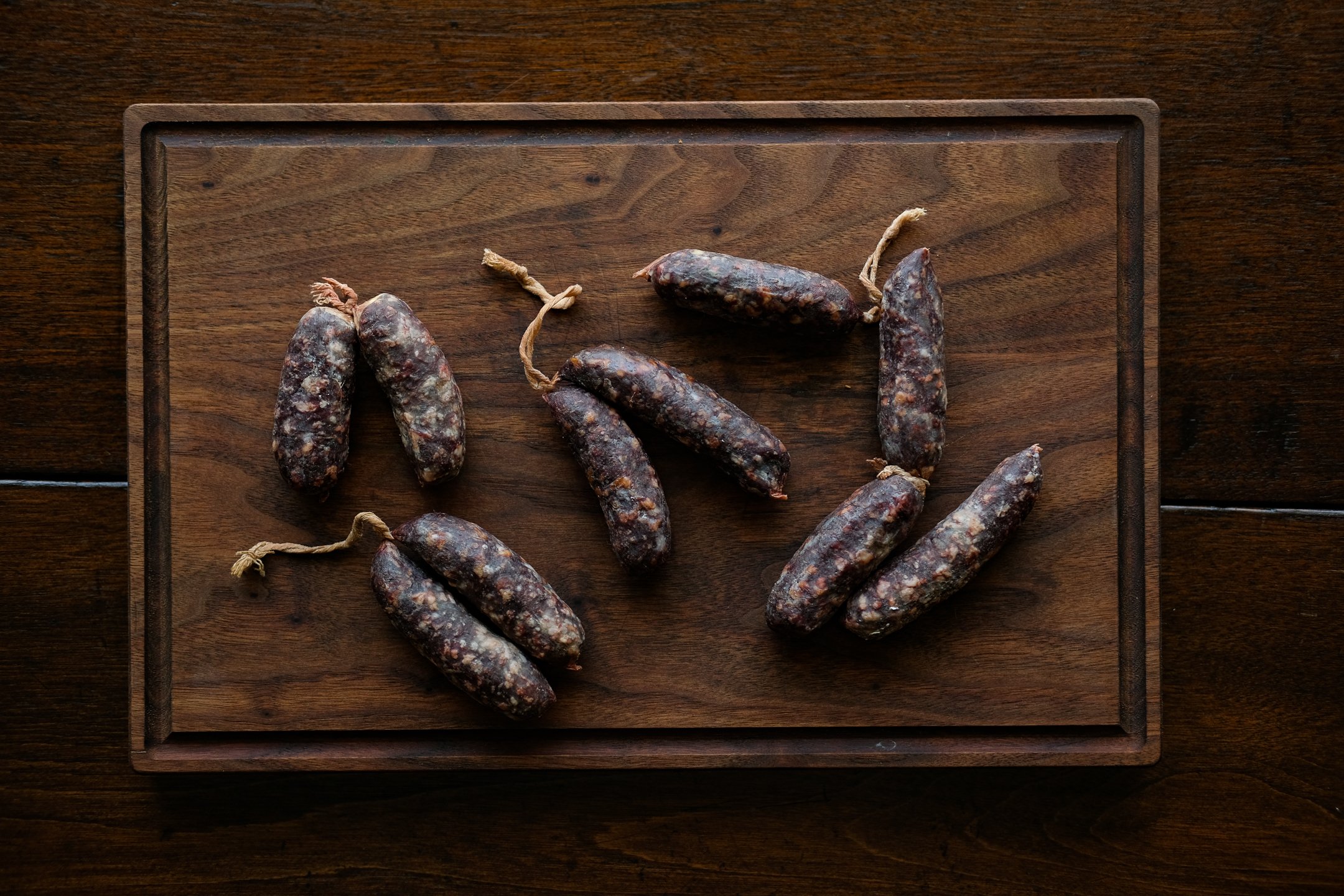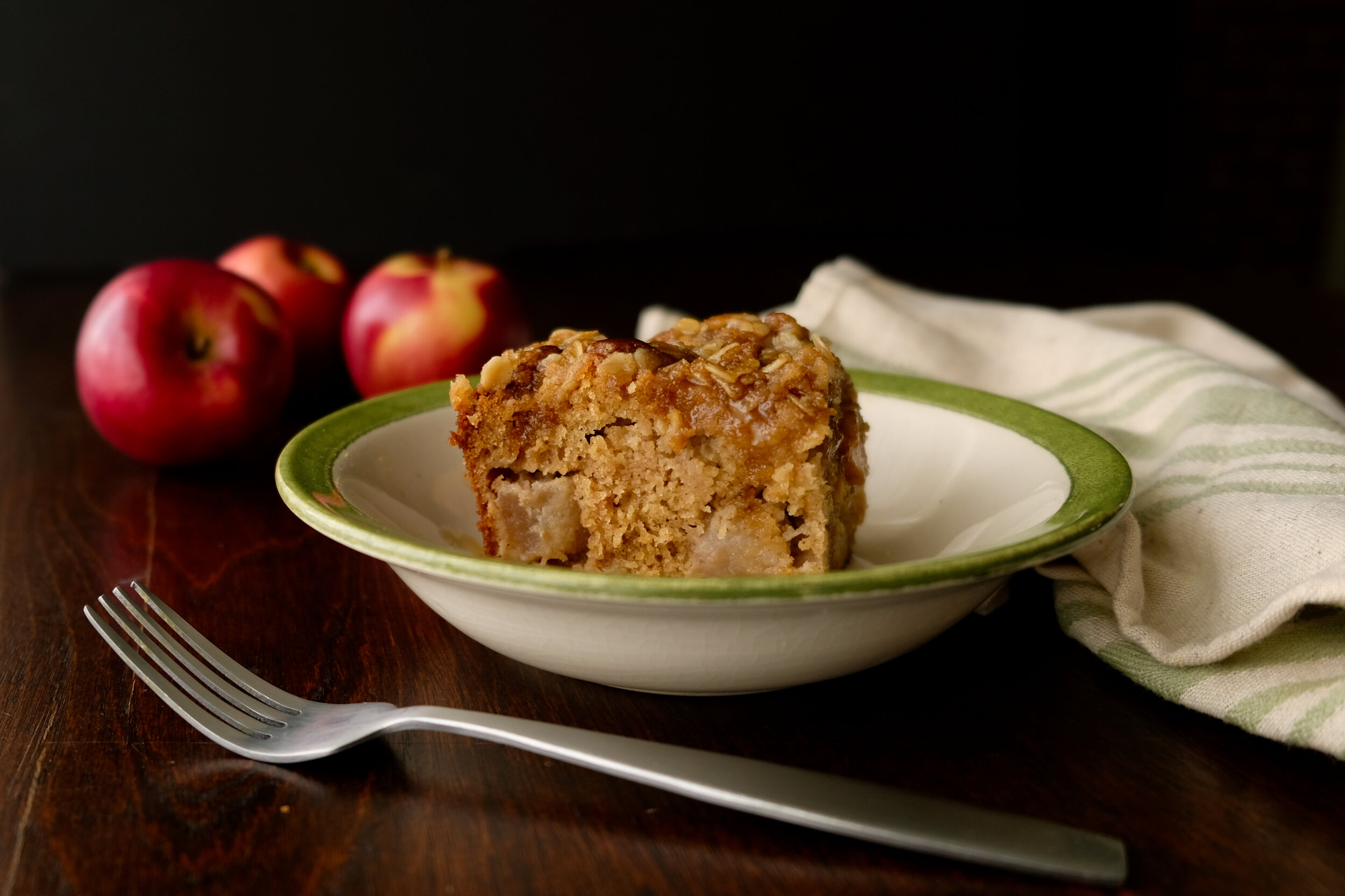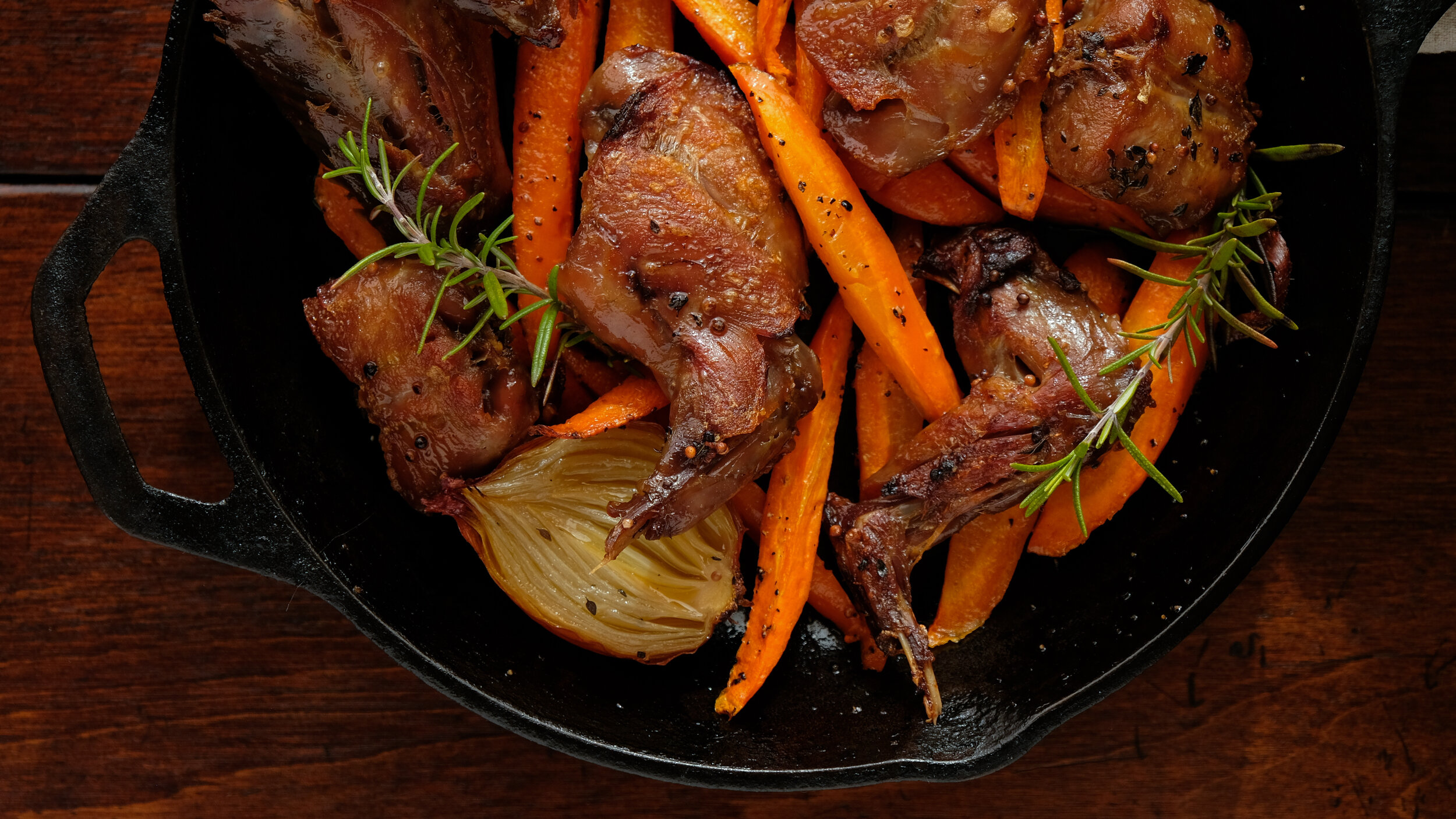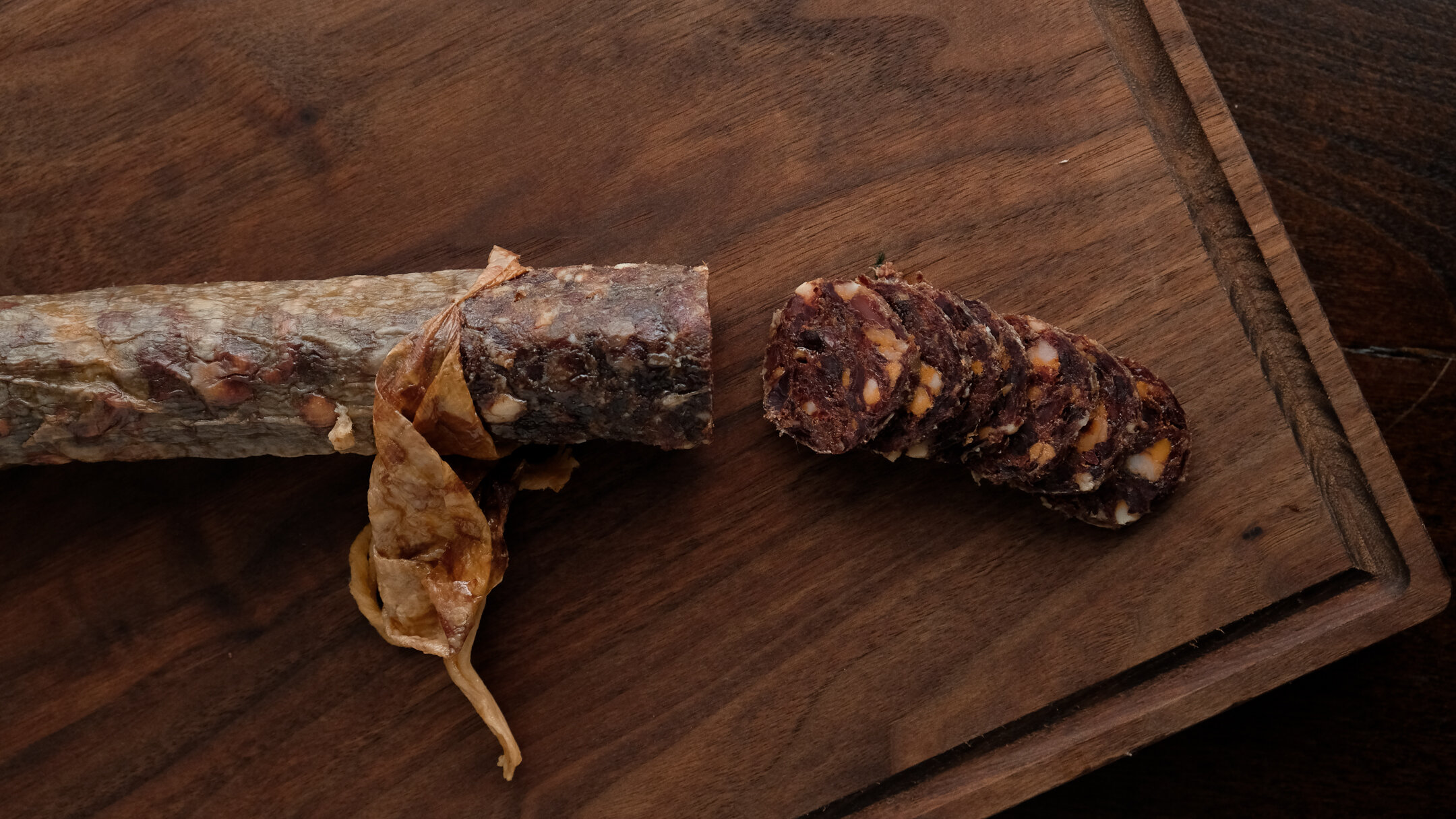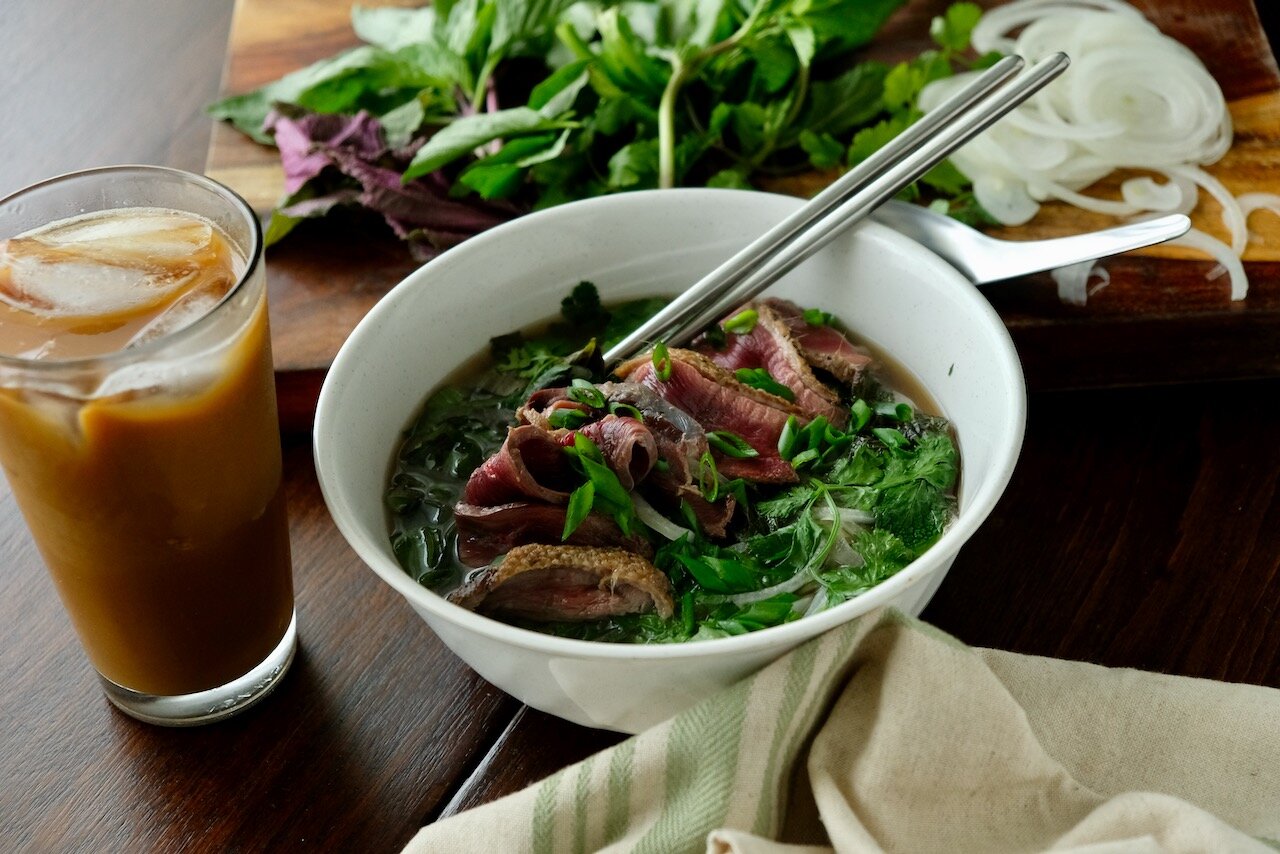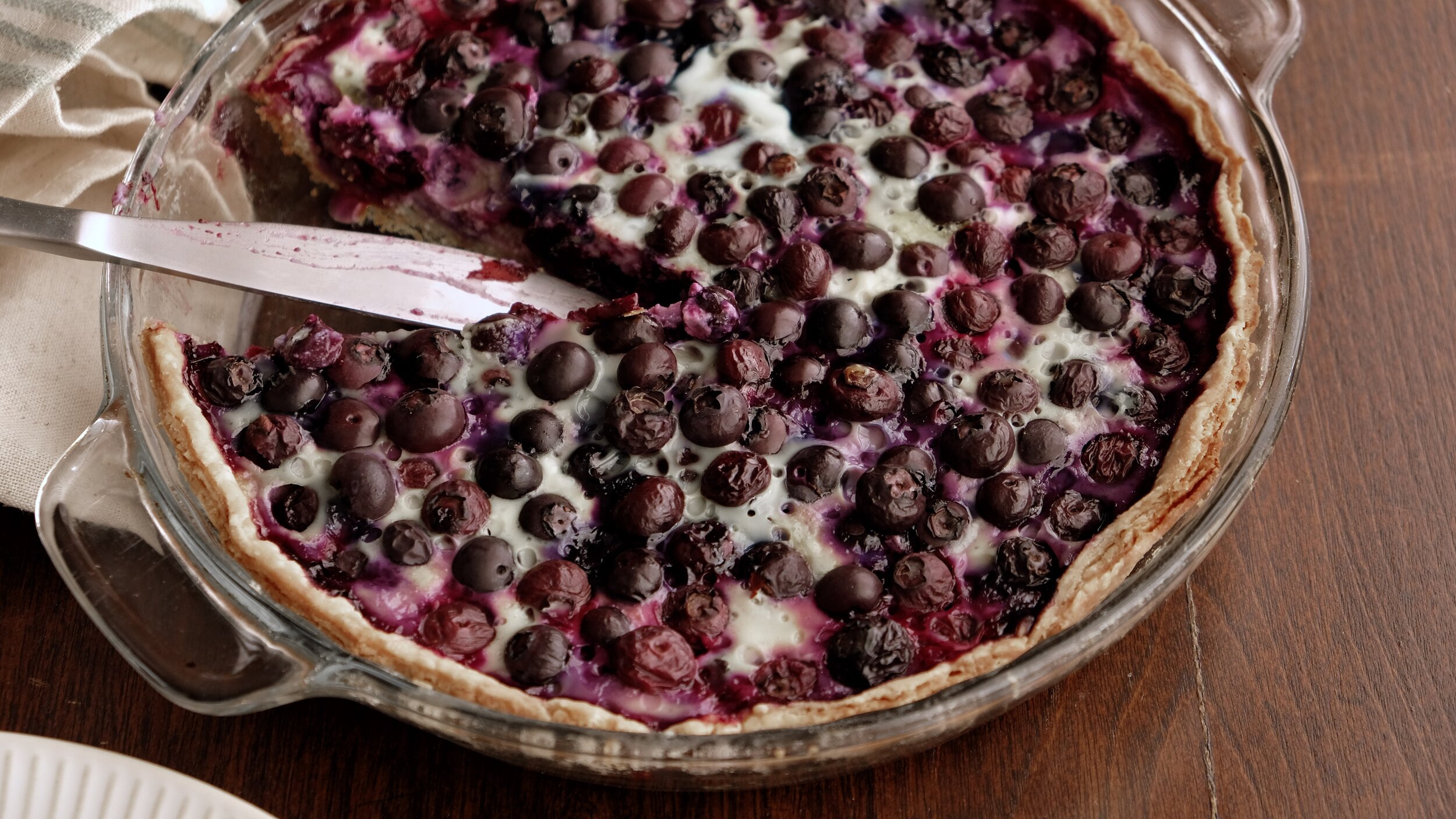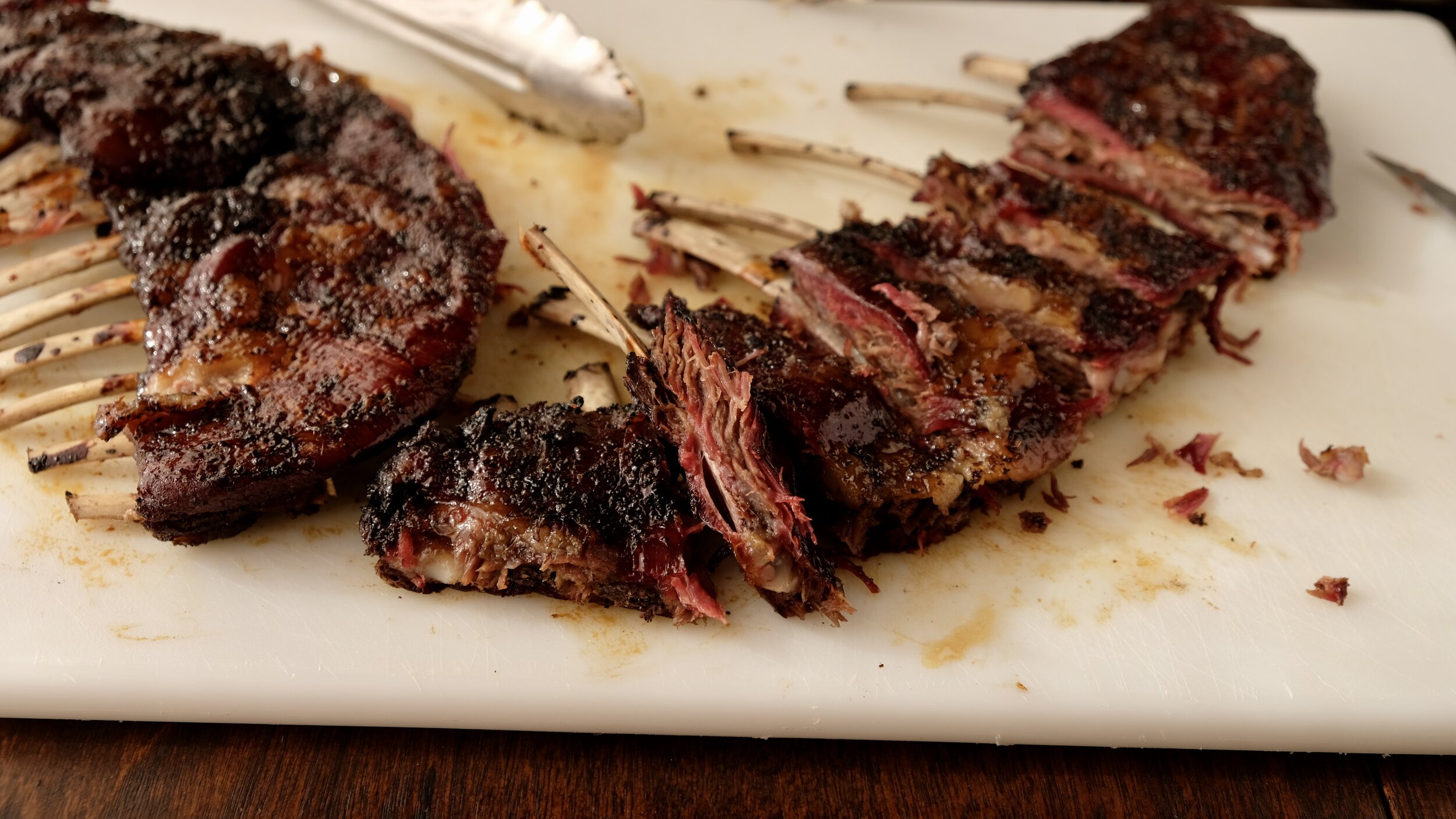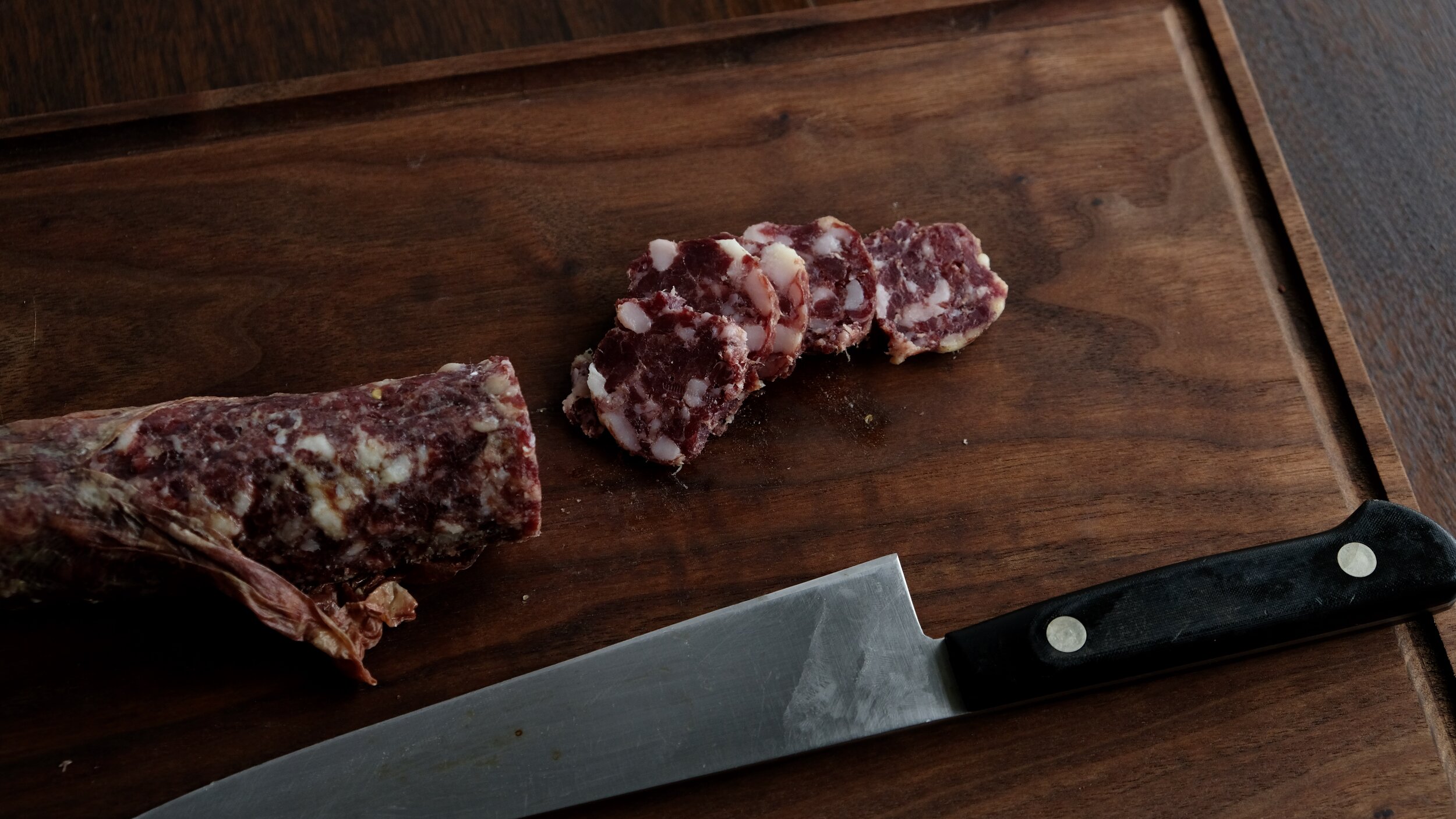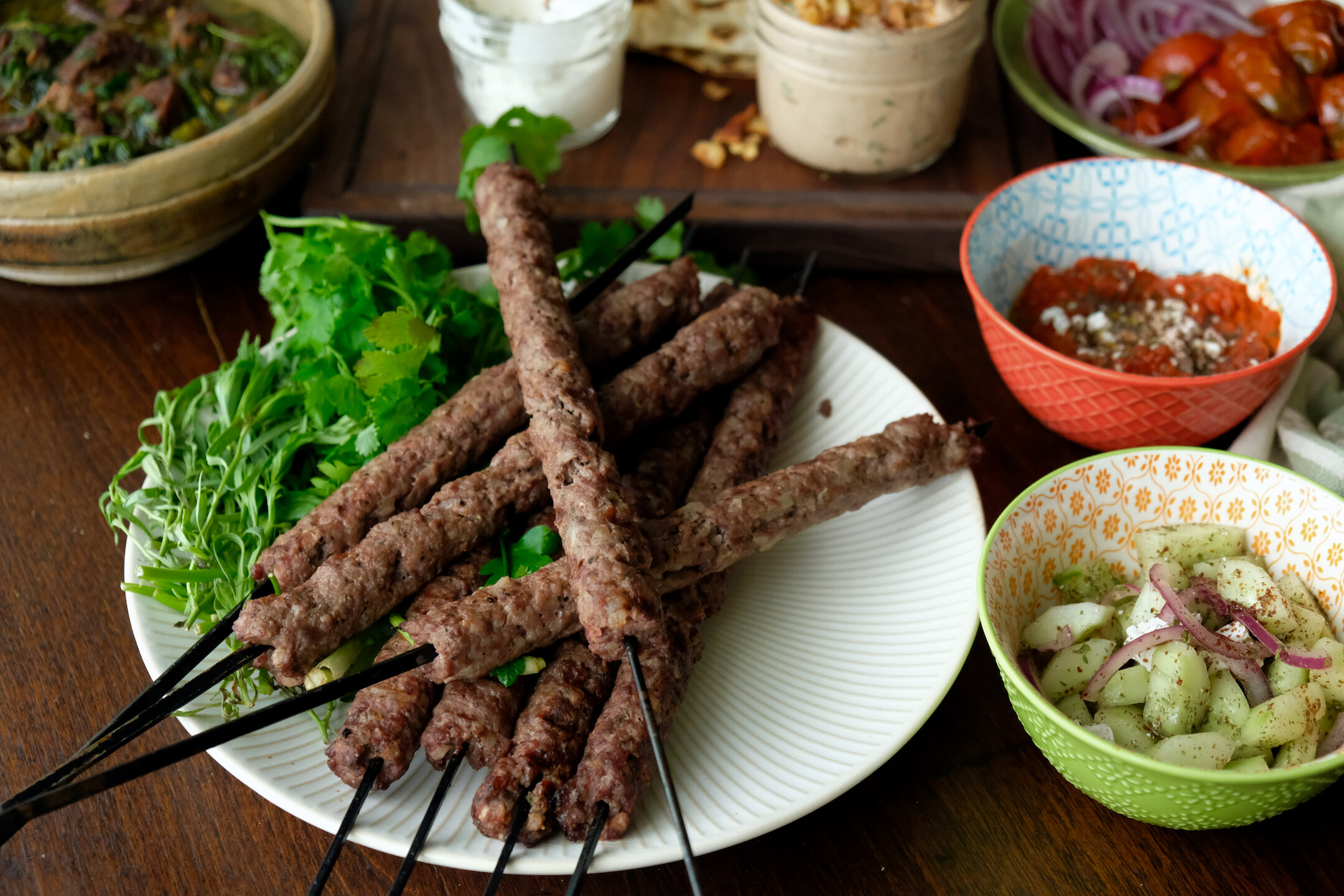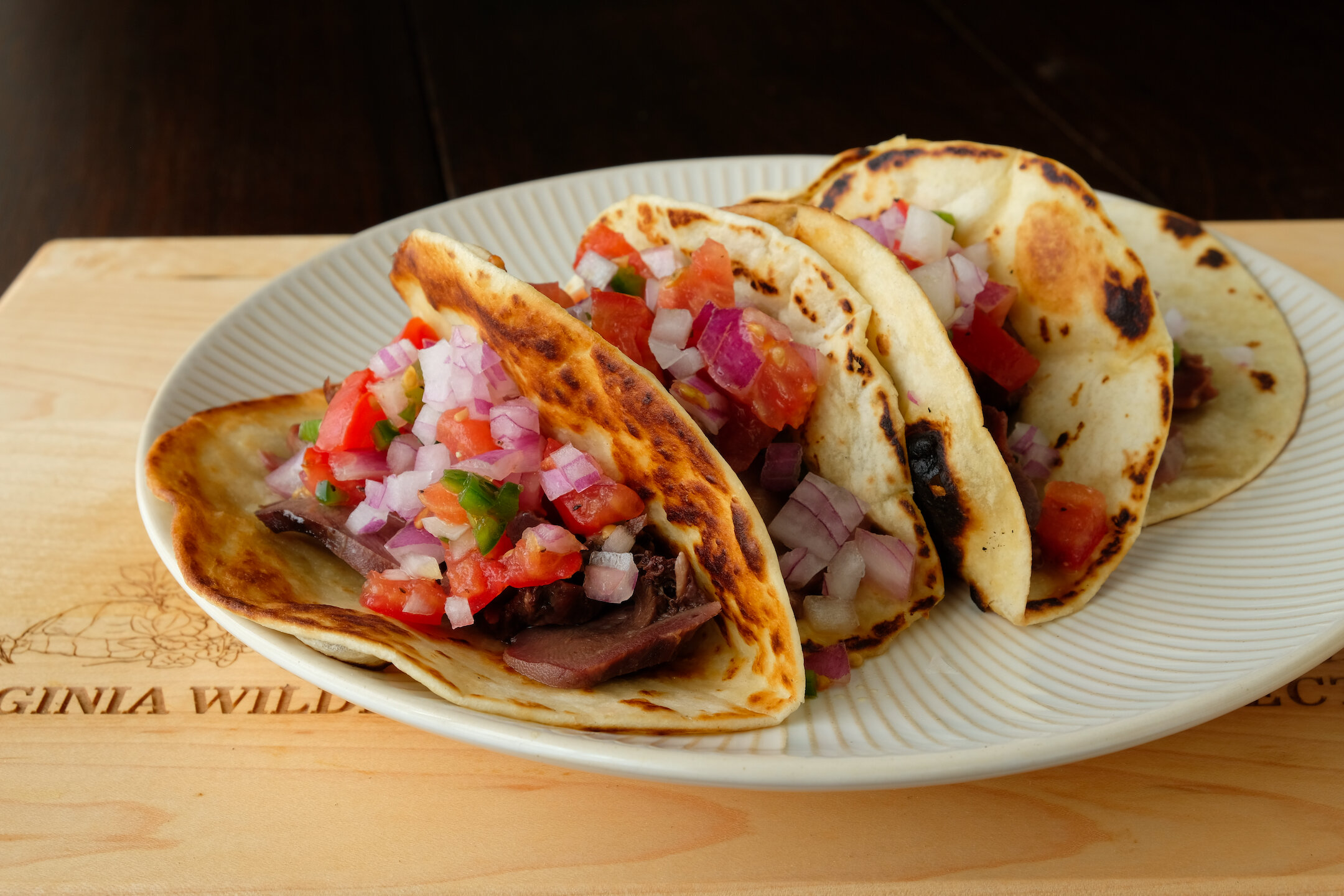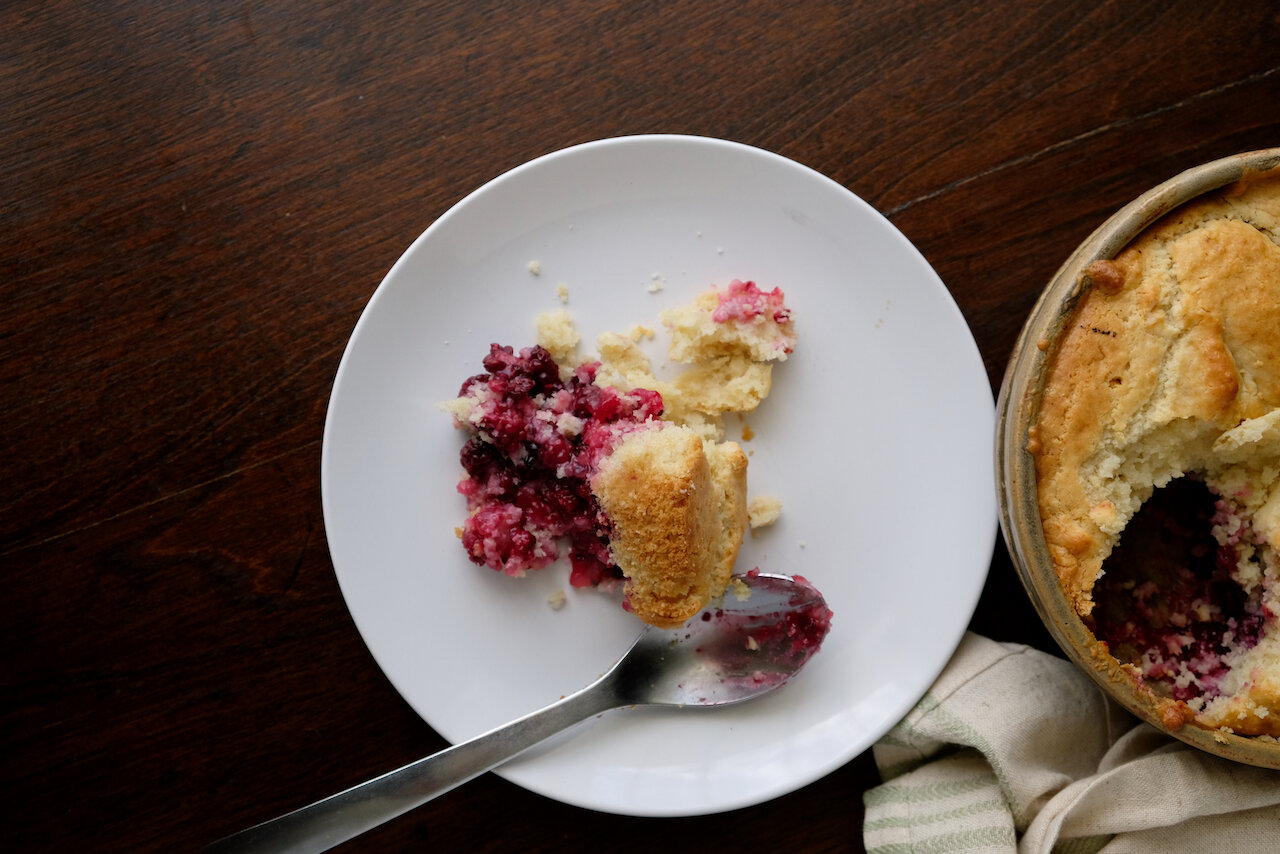Sichuan Dry Fried Black Bear

I killed my first bear this season with the help of my good friend Josh. We spent a couple of days running up and down the mountains of western Maryland, searching for acorns, hickories, and fresh sign. On the second evening, we finally found what we were looking for. We set up along a pinch point and settled in.
About 20 minutes before the end of shooting light, a bear-shaped silhouette appeared in front of me. I touched off a round and anchored it. I knew it wasn’t small, but Josh, who’s a wildlife biologist and far more experienced with bears than I am, was especially excited to see it was such a big one. After quite a bit of work, we had the bear skinned and quartered. I drove home the next day and hung the meat in a walk-in cooler.
I let the meat hang for most of a week, then spent a few evenings breaking it down, packaging, and rendering fat. I cooked a few pieces of trim to taste-test and was pleasantly surprised- the meat was milder than I expected, reminiscent of lean beef or bison, maybe a little like beaver. Judging by the fat and flavor, this bear had likely been feeding in the cornfields.
Bears can carry trichinosis, so even though I didn’t get this one tested, I assumed it was positive and handled it accordingly: clean tools and surfaces thoroughly, don’t eat while processing, the usual precautions. Most sources recommend cooking bear meat to an internal temperature of 145–165°F. I err on the safe side and go to 165°F.
Cooking wild game to 165°F usually guarantees a dry meal, but luckily, Rachel and I have been “Julia-and-Julia-ing” our way through Fuchsia Dunlop’s The Food of Sichuan for almost a year now. Nearly every meat recipe in that book is sliced thin and cooked through, which is perfect for bear.
Dry frying is a technique common to certain regions of China, where a protein is cooked quickly over high heat in order to reduce the water content in the protein. It yields intensely flavorful dishes and is a great way to cook wild game, so “dry-fried whatever’s-in-the-fridge” has become a staple in our house. It’s loaded with flavor, works with just about any protein (turkey, venison, duck, pork, chicken, tofu) and comes together in minutes. The quick cooking keeps the meat tender, and the bold Sichuan flavors pair beautifully with bear. 100% will be cooking this again, probably sooner than later.
Sichuan Dry Fried Black Bear
INGREDIENTS:
~1# of bear loin, tenderloin, or round. Sliced ⅛ thick across the grain
1 ½ tbsp shaoxing cooking wine
6 scallions, whites only, sliced ¼ inch thick (or 1 large giant chinese green onion, whites only)
6-8 sichuan chile peppers, dried (substitute arbol chiles)
~½# of korean long peppers, sliced ½” on the bias (substitute bell peppers or similar)
2 tsp sichuan peppercorns
2 tbsp doubanjiang (there is no substitute for this, get the real stuff)
4 cloves garlic, minced
Equivalent amount of ginger, minced
1 tsp dark soy sauce
½ tsp superfine sugar
Sichuan chile oil
method:
Slice the meat, place in a mixing bowl, add the shaoxing cooking wine, season moderately with salt, mix and set aside while you prep the remaining ingredients.
Heat a wok over high heat, add 2-3 tbsp of cooking oil, add the marinated meat, and spread it out in the wok in a single layer. Cook for about 2 minutes or until mostly browned. Continue to stir the meat and cook until the oil in the pan, which has become cloudy with moisture from the meat, becomes clear again. Add the sichuan peppercorns and dried chiles and stir, cooking until they become aromatic but do not burn.
Tilt the wok, pushing the meat to the high side, and allow the oil to pool at the low point. Add the doubanjiang, ginger, garlic, and scallion whites. Stir the paste and cook until very aromatic and the oil has taken on a red hue. Stir everything to evenly coat.
Add in the dark soy sauce and the sugar, stir to combine. Add in the fresh sliced peppers, stir or toss until peppers are cooked, about 2 minutes. Drizzle with a bit of sichuan chile oil, toss and serve over rice.
Advertising Disclosure:
As an Amazon Associate I may earn from qualifying purchases. With that being said, none of these companies asked or paid me to include their products in this dish. These are the products we keep in our pantry and used in the creation of this recipe.










